Exploring the daring creations of these revolutionary decades, this book is a companion to an upcoming exhibition at the Cincinnati Art Museum.
The period spanning the 1960s and ’70s played out against a backdrop of societal upheaval influenced by diverse and dramatic events, including the civil rights and women’s liberation movements, and protests against the Vietnam War. The creative mantra was one of change, looking toward the future rather than back on more traditional motifs.
The jewelry of this era is the subject of a beautifully-illustrated volume, Simply Brilliant: Artist-Jewelers of the 1960s and 1970s, which is the companion catalog to an upcoming exhibition of the same name at the Cincinnati Art Museum (CAM).
Curated by the book’s author, Cynthia Amnéus, the exhibit is scheduled to run from October 22 this year through February 6, 2022, and follows showcases at two European venues. The jewelry is currently on display until March 14 at Diva — the diamond, jewelry and silver museum in Antwerp, Belgium — and will move to the Schmuckmuseum in Pforzheim, Germany, from March 27 through June 27. Both events are joint projects with CAM, where Amnéus is chief curator as well as curator of fashion arts and textiles. Alongside glorious close-ups of 110 pieces by 50 leading makers, Amnéus’s book features contributions from jewelry historians and curators — including Bulgari specialist Amanda Triossi — offering commentary on the designs and events of the period.
“There were many social and cultural changes that happened during those decades,” Amnéus explains. “I cannot point to one influence over another that spurred these artist-jewelers to create this work. I think it was the zeitgeist of the period.… [The sense of] more freedom, both in clothing and accessories, came from the youth on the streets. It was a time of revolution and change.”
This change in jewelry design, she continues, represents “something really revolutionary on an international scale. Everyone was ready to create something different. Jean Vendome in France, Andrew Grima in England, Arthur King in the US, Roger Lucas in Canada — all were equally consumed with texture and scale in their creations.”
Tracing the movement, Amnéus points out that “the Italians — Mario Masenza in particular — really began this revolution in jewelry in the late 1940s. Young jewelers in England were beginning to experiment with new forms in the second half of the 1950s, just as Mary Quant was experimenting with a new kind of fashion. We [also] see Arthur King from the US working in the Modernist period [1930s to ’40s], and continuing
to create into the 1960s [and] 1970s.”
However, it was the International Exhibition of Modern Jewellery 1890-1961 — an event by the Goldsmiths’ Company that took place in London at the end of the latter year — that “brought this style to the attention of the public, and so there is great focus on the artist-jewelers in England,” the author says.
She adds that “while there have been publications [focused] on individual artist-jewelers in this group, there has not been an exhibition or publication that puts this work in context. This is new research.”
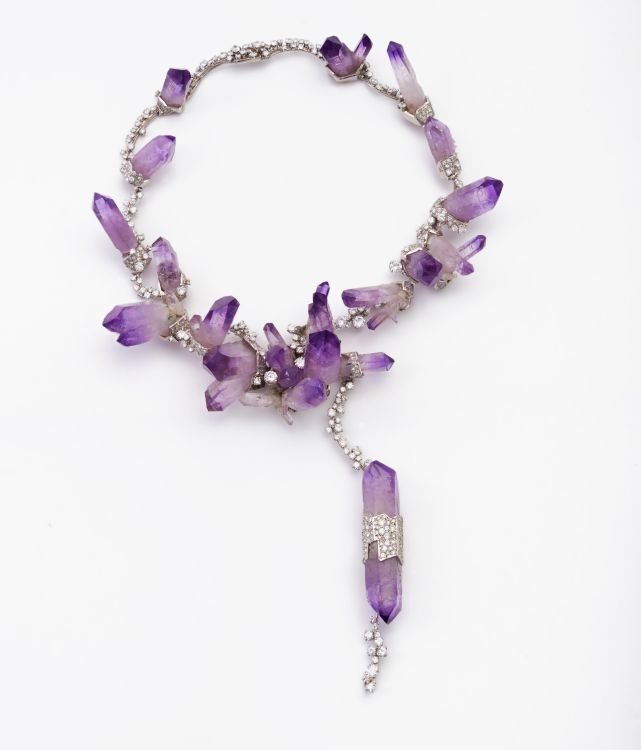
Enduring relevance
Also noteworthy is that the jewelry featured in the volume came from a single, local “world-class collection” — that of Cincinnatian Kimberly Klosterman. This is something that was in the museum’s “own backyard,” the curator observes.
One of the factors making this jewelry relevant to collectors, according to Amnéus, is that “it was a revolutionary time when these artist-jewelers were creating a new style of fine jewelry. Enough time has passed that dealers, collectors and museums are seeing the value in this work and the significance of these designers and designs. It is not a look for everyone, just as some fashion is not.” In addition to Grima and King, she says, favorites include John Donald and Barbara Anton.
These were big, bold statement pieces. “The scale of the work and the texture are design elements particular to this period,” Amnéus explains, adding that this gives them a unique place in jewelry design history.
“You did see use of semiprecious materials in the Art Nouveau period and mixed materials in the Modernist period in the US in the 1930s and 1940s. Both used a larger scale, but I think the jewelers of the 1960s through 1970s took fine jewelry to the next level,” she says. “Their work was also more abstract, more asymmetrical, more audacious. What they created was as much art as jewelry, and they called themselves artists first, jewelers second.”
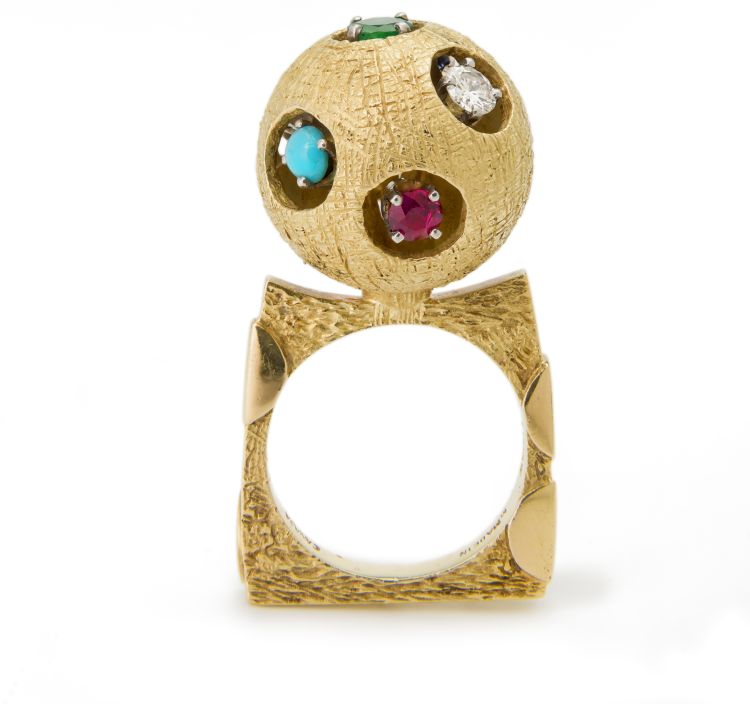
Playing with technique and ideas
Casting from natural objects was a technique new to these artist-jewelers, says Amnéus, and one “employed by Andrew Grima in particular. This led to pieces that tended to be asymmetrical. Lisa Sotilis began creating jewelry because she could not find what she wanted on the market. When told no one created jewelry in the method she suggested, she began hammering her own body jewelry from fine gold.”
The work was “more free-form, in general, and therefore related to the artwork being created at the time,” Amnéus continues. Most of the earlier jewelers using semiprecious materials were focused on creating fine jewelry, she says. Artist-jewelers of the 1960s and ’70s took a different design approach, working with a variety of semiprecious stones and using precious gems sparingly, if at all — perhaps featuring “small diamonds for a bit of brilliance.” They worked primarily in yellow gold.
While it is the male jewelers from this period that remain best known today, Amnéus points to some women in the group who were “just as inventive”
as the men. “When you compare Barbara Anton’s work with the jewelry of someone like Jean Vendome, I don’t see a different sensibility. Both are pushing the edge in terms of scale and texture. Anton looked very much the typical housewife, but created very avant-garde pieces, such as jeweled garters, that could be converted into other pieces or large-scale jewelry for men.”
Others include Sotilis — who designed body jewelry that Amnéus declares was in a “class of its own” — as well as Marguerite Stix and Helen Woodhull, both of whom chose “a different kind of material that related to previous ongoing interests they had.” Stix, a sculptor and designer, became known for using shells she had collected, combining them with gold and gemstone accents. Woodhull turned her love of history into jewelry that evoked antiquities, such as cameos and Greek and Roman intaglios mounted in 22-karat gold.
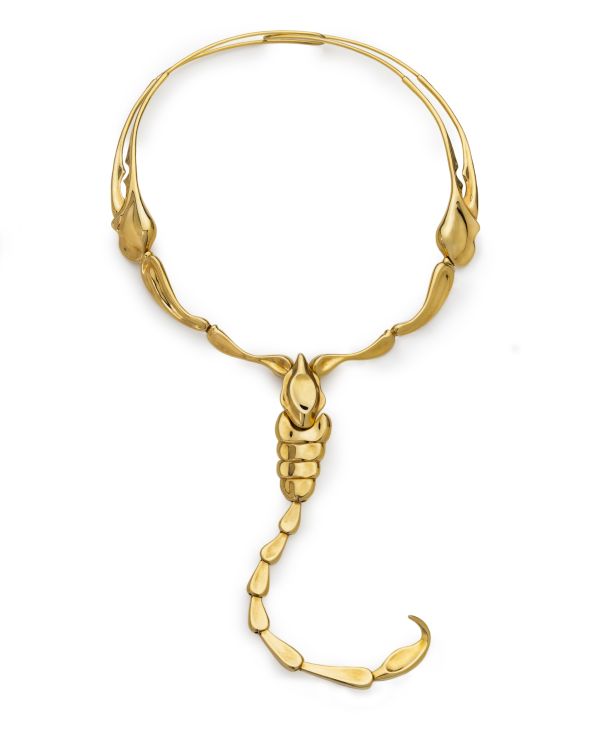
Main image: Chaumet by Pierre Sterlé bird brooch in gold with diamonds, 1960s. Photo: Cincinnati Art Museum/Tony Walsh.

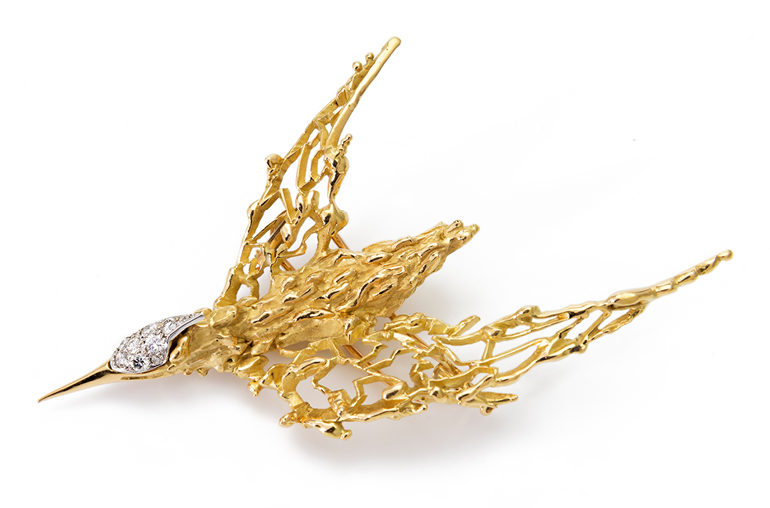
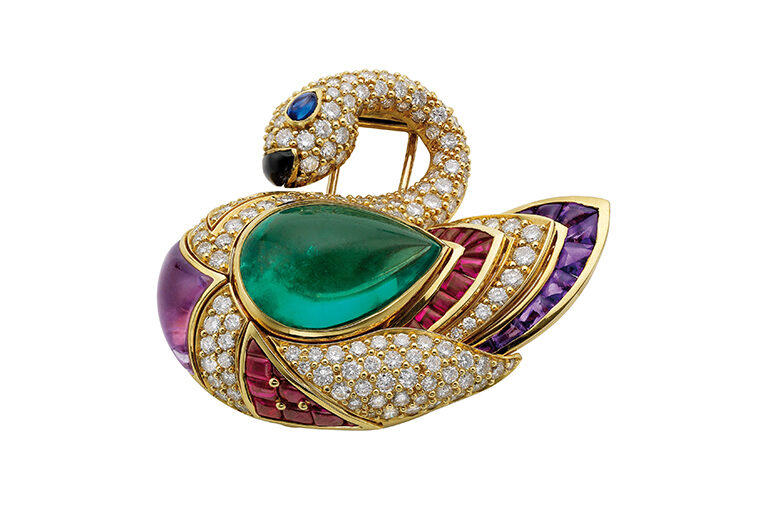
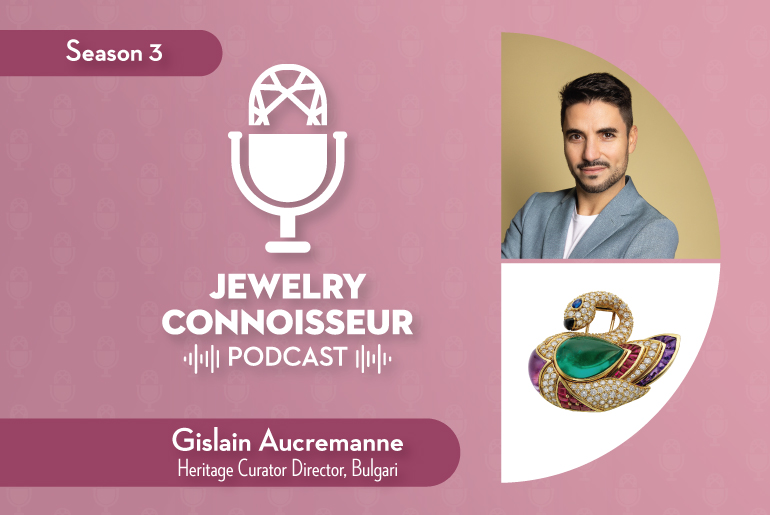
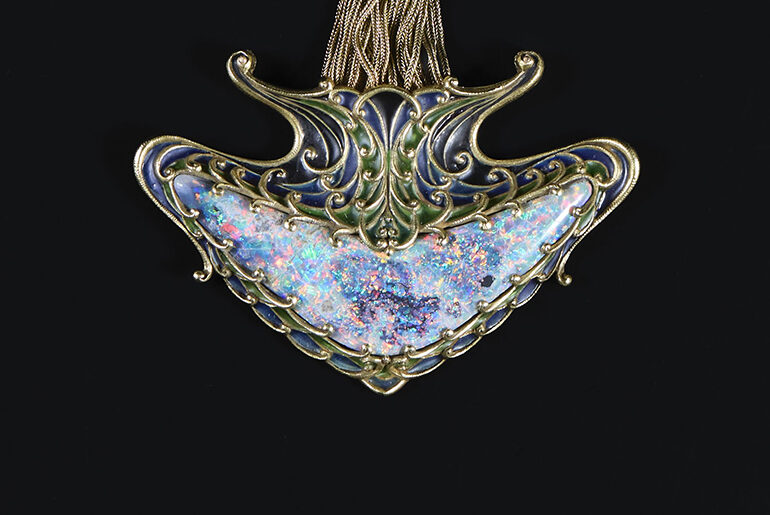
2 Comments
Great line up. We will be linking to this great article on our site. Keep up the good writing.
This really answered my drawback, thanks!